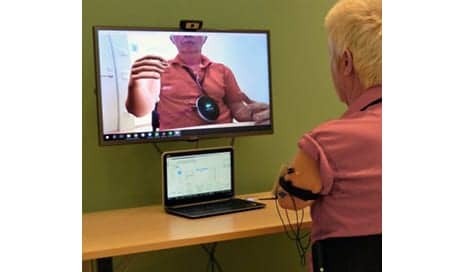A clinical study published in The Lancet looks at a novel method of treating phantom limb pain that uses machine learning and augmented reality.
According to the study, the method—developed by Dr Max Ortiz-Catalan At Chalmers University of Technology—has been tested on several amputees with chronic phantom limb pain who found no prior relief, and it reduced their pain by 50%.
“We selected the most difficult cases from several clinics,” Ortiz-Catalan says in a media release from Chalmers University of Technology. “We wanted to focus on patients with chronic phantom limb pain who had not responded to any treatments.”
“Four of the patients were constantly medicated, and the others were not receiving any treatment at all because nothing they tried had helped them. They had been experiencing phantom limb pain for an average of 10 years,” he adds.
He dubs the new method “phantom motor execution,” and it works by using muscle signals from the amputated limb to control augmented and virtual environments.
Electric signals in the muscles are picked up by electrodes on the skin. Artificial intelligence algorithms translate the signals into movements of a virtual arm in real-time. The patients see themselves on a screen with the virtual arm in the place of the missing arm, and they can control it as they would control their biological arm.
Thus, the perceived phantom arm is brought to life by a virtual representation that the patient can see and control. This allows the patient to reactivate areas of the brain that were used to move the arm before it was amputated, the release explains.
The dozen or so patients underwent 12 sessions with the new method. By the last session, the patients note that the intensity, frequency, and quality of their pain, as well as the pain’s intrusion on their sleep and their daily activities, had decreased by approximately 50%.
In addition, the release notes, two of the four patients who were on analgesics were able to reduce their doses by 81% and 33%, respectively.
“The results are very encouraging, especially considering that these patients had tried up to four different treatment methods in the past with no satisfactory results,” Ortiz-Catalan says. “In our study, we also saw that the pain continuously decreased all the way through to the last treatment. The fact that the pain reduction did not plateau suggests that further improvement could be achieved with more sessions.”
[Source(s): Chalmers University of Technology, Science Daily]




